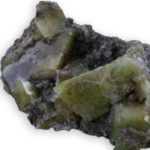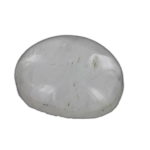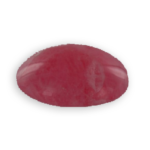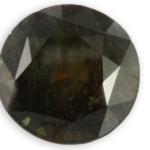
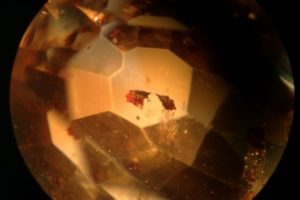
solid iron inclusion transformed by heating this citrine
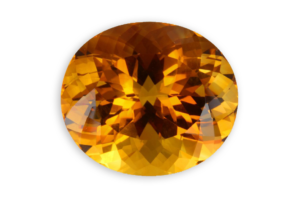
citrine
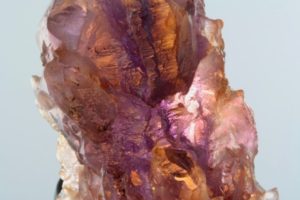
ametrine quartz from Anais in Bolivia
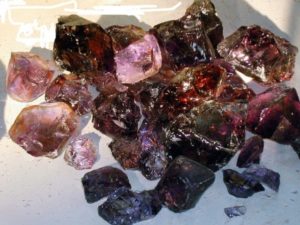
uncut ametrine from Bolivia
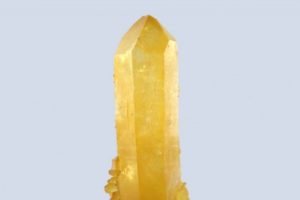
citrine crystal from Brazil
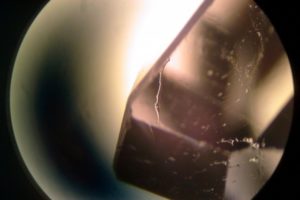
fluid inclusions (liquid – gas) in bubbles

solid iron inclusion transformed by heating this citrine

citrine
Detailed sheet
citrine
It is a yellow variety of quartz. Its name comes from the Latin “citrus”, this gem owes its name to its lemon yellow color due to its iron content but the name was male until the seventeenth century (citrine quartz). The natural citrines, of a very pure and bright yellow, are actually quite rare, most of them being amethyst or smoky quartz, heated, but then their color turns more towards the brown-red.
The ametrine is a bicolor variety of quartz , also called bolivianite or trystine for half amethyst and half citrine. Its name reminds the amethyst and citrine.
The Ayoreos Indians living in the El Chaco region, east of Bolivia, about thirty kilometers from Brazil, discovered it entangled in tree roots. They exchanged it for food with the Spanish invaders.

CHEMICAL CHARACTERISTICS
SiO2
silicon dioxide, silica

PHYSICAL CHARACTERISTICS
Main color
yellow
Other colors
brown, orange, purple
due to iron: from light yellow to golden brown. Ametrine is of two colors: yellow and purple
Color of streak
white
Luster
vitreous
Hardness
7.0 to 0.0
Density
2.63 to 2.65
Cleavage
none
Fracture
conchoidal, splintery

OPTICAL PROPERTIES
Transparency
transparent
Refractive index
1.543 - 1.554
Double refraction
0.009
weak uniaxial positive
visible double refraction
No
Dispersion
0.013(0.008)
Pleochroism
weak
Number of colors
2
yellow to light yellow. Heated amethysts become yellow and have no pleochroism.
Fluorescence
none

CRYSTALS PROPERTIES
6-sided pseudo-hexagonal prisms ending in 6 sides pyramid
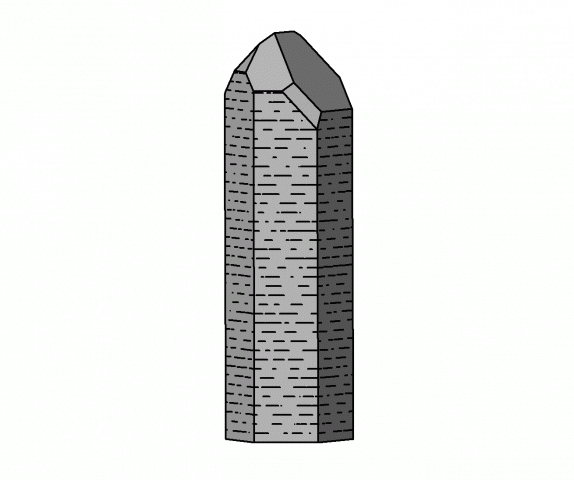
crystals system
trigonal

OTHER INFORMATIONS
Astrological sign
Leo, Pisces, Sagittarius, Scorpio
Month
november
Chinese astrological sign
Rooster

APPROACHING GEMS
Exploited
sites
Deposits of citrine are found in Brazil (Bahia, Minas Gerais), Madagascar, United States, Argentina, Burma, Namibia, Russia, Scotland and Spain.A The ametrine comes mainly from Bolivia where it has to was first exploited in an illegal manner by the army and adventurers who have exhausted the surface layers. It is, since 1990, exploited by a private company, in shafts and tunnels of several tens of meters deep. They are also found in Brazil and Uruguay.
use in jewelry
The transparent varieties are used to make rings, pendants, necklaces. In the nineteenth century, citrine decorated the watch keys of the elegants, tiaras, combs. Citrine is the gemstone for the 13th anniversary year of marriage.
Daily care
and precautions
Easy to maintain, but it must avoid high temperatures and calcium deposits which could be deposited after washing with water with dishwashing liquid. So do not forget to rinse it with alcohol after washing with water.
imitations and
treatments
Like for all quartz, some glass imitations of citrine exist. We know how to synthesize ametrine.
Some citrines were called topaz from Bahia, Bohemian topaz, Indian topaz, Rio Grande topaz, Madeira topaz etc. … all these names in jewelry are prohibited.
Historical
healing properties
The healers would rather use the natural very clear citrine that, as solar stones, are suitable on the plexus chakra. They bring joy, good humor, strenghten intelligence and body, favoring the concentration of the mind, sending away fatigue and facilitating intellectual work. Its influence would stretch the development of love.
It would be recommended in a sickroom in which it would broadcast a positive energy. It would boost the metabolism and speeding up the propagation of nerve impulses. It cleanse the skin, it has been reported that citrine water consumption would increase its benefits.
Like amethyst, it would allay the anxieties and bring peace and harmony. It is purified in distilled water in the sun. Ametrine: it brings together the properties of amethyst and citrine, boosts humorous creativity imagination relaxed, good humor, positive energy.
historical stones
and related legends
Long time ago in a remote boundary of Bolivia and Brazil, a sorcerer imprisoned in a crystal the violet mantle of dawn, but the sun, angry, hid it deep within the Earth. Longtime after, a conquistador had shown to his monarch in Spain a sample of this rock that was given to him by a descendant of the sorcerer, a princess of the Ayoreos tribe with whom he was married. However, the people to whom the princess belonged preferred to sacrifice her rather than see her go away. Dying in the arms of her husband who embraced her, she placed in his hands in an ametrine, a pledge of eternal love. The mine still bears her name in the nineteenth century: Anahi. The miners say that from time to time, the calm is broken by the cries of the conquistador.
Venez visitez
notre site web
voillot-joaillier.fr
Lorem ipsum dolor sit amet, consectetur adipiscing elit. Ut elit tellus, luctus nec ullamcorper mattis, pulvinar dapibus leo.Lorem ipsum dolor sit amet, consectetur adipiscing elit. Ut elit tellus, luctus nec ullamcorper mattis, pulvinar dapibus leo consectetur adipiscing elit. Ut elit tellus, luctus nec.

